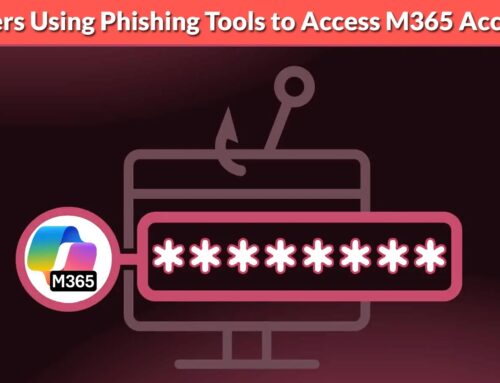
Hackers Leverage Compromised Third-Party SonicWall SSL VPN Credentials to Deploy Sinobi Ransomware
The year 2025 has ushered in a stark reminder of cybersecurity’s dynamic threat landscape. A sophisticated ransomware operation, leveraging compromised credentials from a third-party managed service provider (MSP), has successfully breached corporate networks at an alarming rate. This incident highlights a critical shift in cybercriminal methodology, focusing on the weakest link in the supply chain to achieve maximum impact. This detailed analysis, tailored for cybersecurity professionals and IT managers, dissects the recent Sinobi ransomware attacks and provides actionable strategies for defense.
The Sinobi Ransomware Campaign: A Deep Dive
Recent intelligence reveals a series of devastating ransomware attacks orchestrated by the Sinobi Group, operating as a Ransomware-as-a-Service (RaaS) affiliate. Their modus operandi relies on exploiting compromised SonicWall SSL VPN credentials, specifically targeting those linked to over-privileged Active Directory accounts with domain administrator rights. This strategy bypasses traditional perimeter defenses, gaining direct access to critical internal systems. The focus on third-party MSPs as an initial compromise point underscores a growing trend where cybercriminals exploit trusted vendor relationships to infiltrate target organizations.
The attackers’ ability to map SonicWall SSL VPN credentials to highly privileged Active Directory accounts indicates either sophisticated credential harvesting techniques, bruteforcing of weak credentials, or lateral movement within an already compromised MSP network. Once inside, with domain administrator access, the Sinobi Group deploys its ransomware payload, rapidly encrypting critical data and crippling operations. While no specific CVEs for the direct Sinobi ransomware payload are publicly available at this time, the attack chain leverages known weaknesses in identity and access management, and potentially misconfigurations or unpatched vulnerabilities in VPN appliances that allowed for credential exfiltration or brute-force attacks.
Understanding the Attack Vector: Compromised VPN and AD Credentials
The core of the Sinobi ransomware attack lies in two critical components: compromised SonicWall SSL VPN credentials and over-privileged Active Directory accounts. SonicWall SSL VPNs are widely used secure remote access solutions, making them lucrative targets for attackers seeking ingress points. When these VPN credentials, especially those managed by a third-party MSP, are compromised, they serve as a direct gateway into the target’s network. The subsequent mapping to domain administrator accounts within Active Directory provides the attackers with unfettered control over the enterprise environment, allowing them to disable security controls, exfiltrate data, and deploy ransomware unimpeded.
- Third-Party Risk: Reliance on MSPs introduces a shared security responsibility. A compromise at the MSP level can directly impact multiple client organizations.
- Credential Theft: Phishing, malware, or brute-force attacks against MSP infrastructure can yield VPN credentials.
- Over-Privileged Accounts: Granting domain administrator rights to accounts used for routine remote access or managed by third parties creates an unacceptable risk exposure. This violates the principle of least privilege.
Remediation Actions and Proactive Defenses
Defending against multifaceted attacks like those perpetrated by the Sinobi Group requires a holistic and proactive approach. Organizations must assume breach and harden their environments against similar future threats, focusing on identity, access, and third-party risk management.
- Strengthen Multi-Factor Authentication (MFA): Implement mandatory MFA for all VPN access, especially for administrative accounts and those managed by third parties. Utilize strong, phishing-resistant MFA methods where possible.
- Principle of Least Privilege: Regularly audit Active Directory accounts, particularly those associated with VPN access. Revoke unnecessary domain administrator privileges. Implement tiered administration models to segment administrative access.
- Regular Credential Rotation: Enforce strong password policies and regular rotation for VPN and Active Directory credentials, particularly for MSP-managed accounts.
- Monitor VPN and RDP Logs: Implement robust logging and continuous monitoring of VPN access logs for anomalous activity (e.g., unusual login times, locations, or account usage). Pay close attention to RDP access from VPN tunnels.
- Network Segmentation: Isolate critical systems and data from broader network access. In the event of a breach, segmentation can limit lateral movement and contain the damage.
- Endpoint Detection and Response (EDR): Deploy EDR solutions across all endpoints to detect and respond to suspicious activities, including ransomware deployment attempts and lateral movement.
- Managed Service Provider (MSP) Security Audits: Conduct thorough security assessments of all third-party MSPs. Ensure they adhere to your security standards, including incident response plans and access management policies.
- Incident Response Plan: Develop and regularly test a comprehensive incident response plan specifically for ransomware attacks, including data recovery strategies from offline backups.
- Employee Security Awareness Training: Continuously train employees, including IT staff, on phishing attacks and social engineering tactics.
- Patch Management: Maintain a rigorous patch management program for all network devices, including SonicWall SSL VPN appliances.
Relevant Detection and Mitigation Tools
Leveraging the right tools is crucial for detecting and mitigating threats stemming from compromised credentials and ransomware deployment. This table provides a non-exhaustive list of valuable solutions.
| Tool Name | Purpose | Link |
|---|---|---|
| Log Management/SIEM (e.g., Splunk, Elastic Security) | Centralized logging and analysis for VPN, Active Directory, and endpoint logs to detect anomalies. | Splunk.com |
| Endpoint Detection and Response (EDR) (e.g., CrowdStrike, SentinelOne) | Detects and responds to malicious activity on endpoints, including ransomware and lateral movement. | CrowdStrike.com |
| Identity and Access Management (IAM) Tools | Manages user identities, authentication, and authorization for stronger access controls. | (Vendor-specific) |
| Vulnerability Management Solutions (e.g., Tenable, Qualys) | Identifies vulnerabilities in network devices and systems that could be exploited. | Tenable.com |
| Active Directory Security Auditing Tools | Assesses security configurations and identifies misconfigurations or over-privileged accounts in AD. | (Vendor-specific) |
Key Takeaways for Cybersecurity Resilience
The Sinobi ransomware attacks serve as a potent reminder that the threat landscape is constantly evolving. Attackers are becoming more sophisticated, targeting supply chains and leveraging trusted access points. Robust cybersecurity defenses must inherently include stringent identity and access management, continuous monitoring, and a proactive stance on third-party risk. Organizations must move beyond perimeter defense and embrace a zero-trust model, assuming that any part of their network could be compromised. Strategic investments in people, processes, and technology are paramount to building long-term cybersecurity resilience against state-sponsored actors and sophisticated criminal groups like the Sinobi Group.





